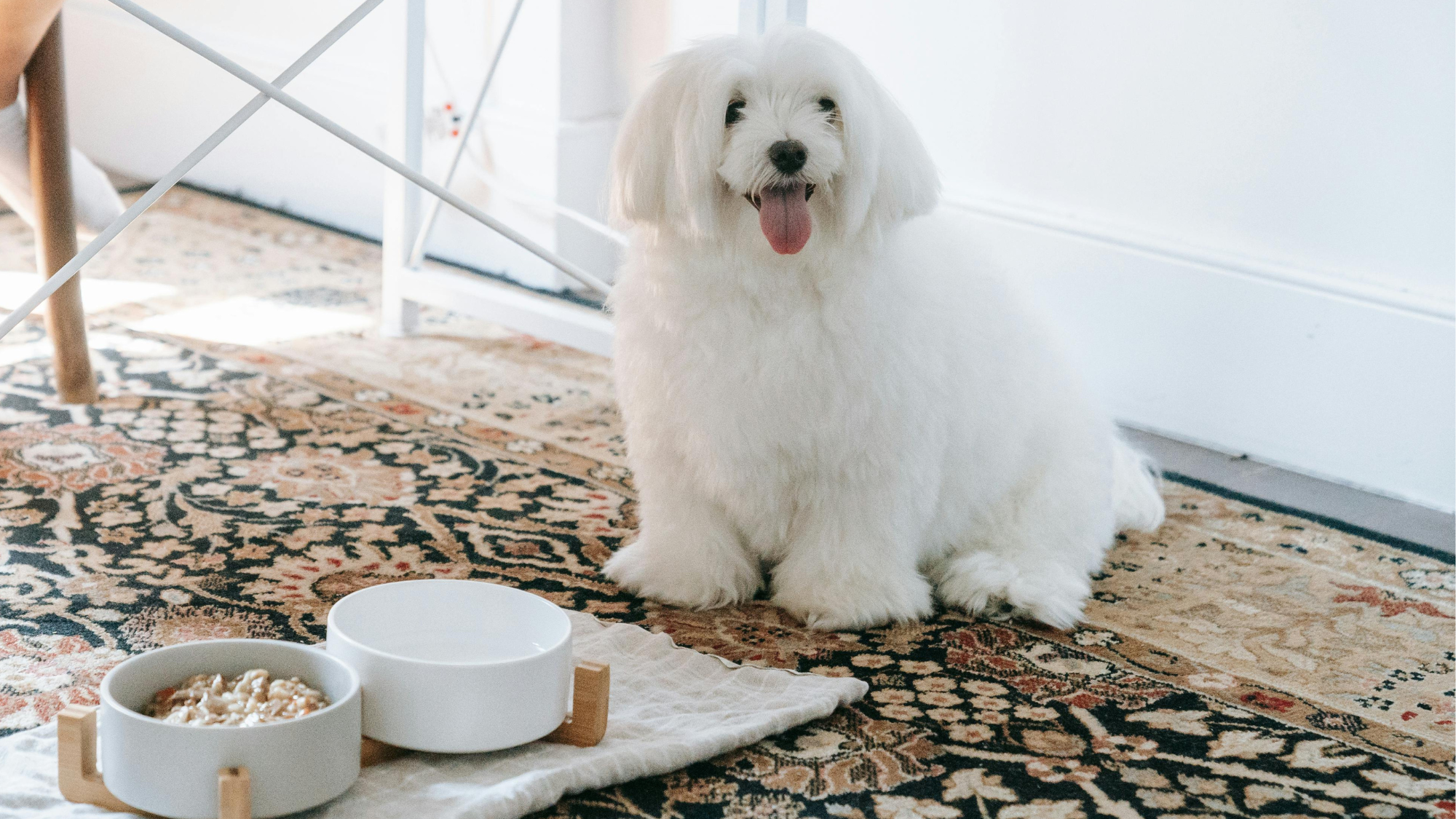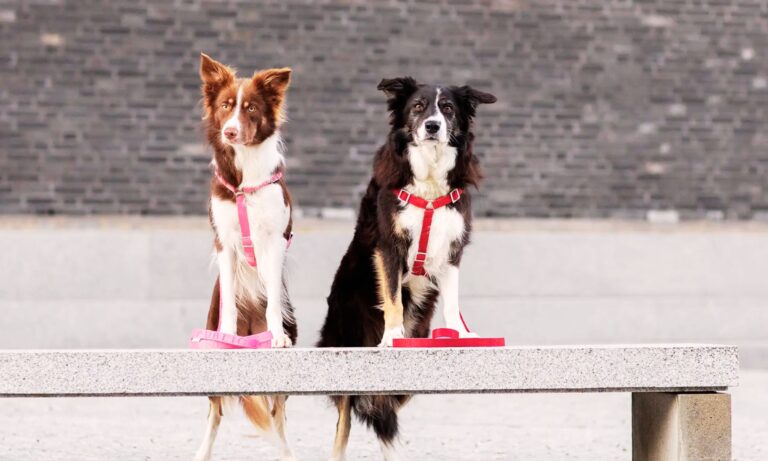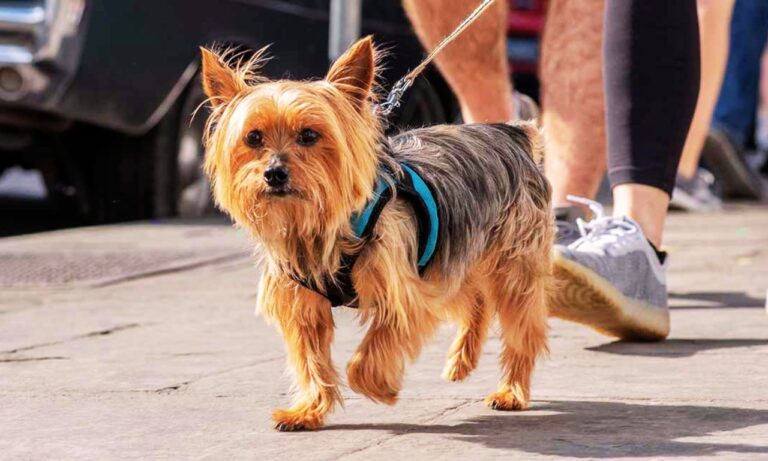Determining the right amount of food for your dog is crucial to maintaining their overall health, energy levels, and longevity. Feeding too little can lead to nutritional deficiencies and dog weight loss, while overfeeding can result in obesity and associated health problems such as joint issues, heart disease, and diabetes. So, how much food should I feed my dog?
To find out the what size collar for an Affenpinscher, ensure you measure your dog’s neck correctly for a perfect fit.
I’ll explore how to determine the proper portion sizes for your dog, taking into account factors such as age, breed, weight, activity level, and metabolism. We’ll also provide tips for monitoring your dog’s health and adjusting their diet over time.
Blog Highlights
ToggleUnderstanding Your Dog’s Nutritional Needs
Every dog is unique, and their nutritional requirements will vary based on several factors. The primary goal is to provide a balanced diet that meets their daily caloric needs as well as supplies essential proteins, fats, carbohydrates, vitamins, and minerals.
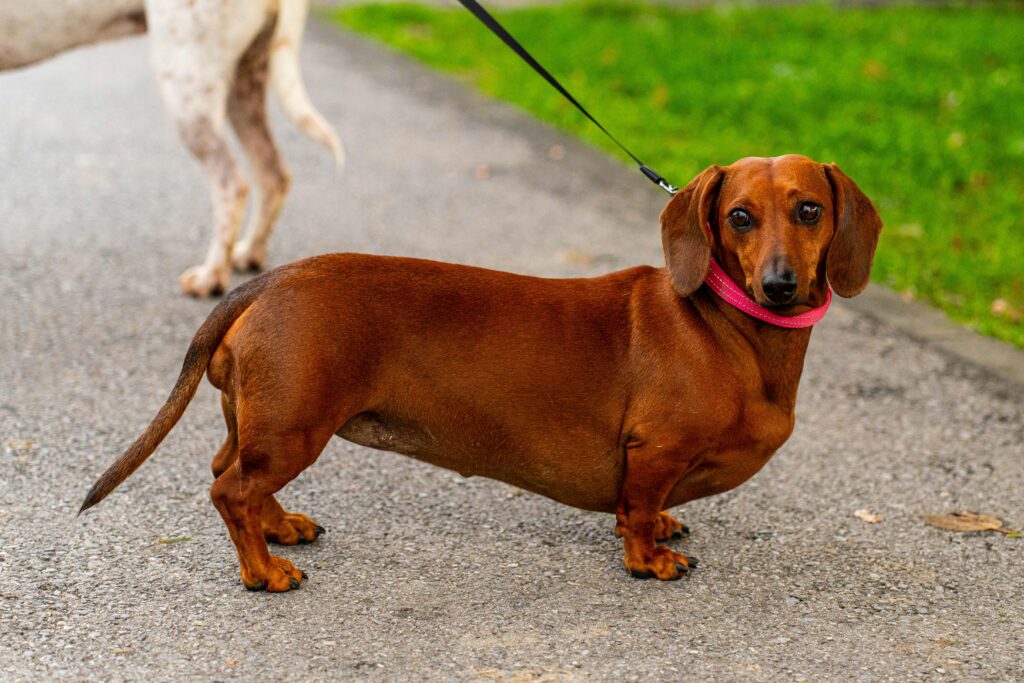
The Role of Calories
Calories are the basic units of energy that your dog needs to fuel daily activities, from playtime and walks to mental stimulation and growth. The number of calories required depends on:
- Body weight: Larger dogs generally need more calories than smaller dogs.
- Age: Puppies and young adult dogs have higher energy needs for growth and activity, while senior dogs may require fewer calories.
- Activity level: Highly active or working dogs burn more calories and therefore need more food than sedentary dogs.
- Metabolism: Some dogs naturally have faster or slower metabolisms, affecting their overall energy needs.
Veterinarians often use formulas to estimate your dog’s daily caloric requirements, such as the Resting Energy Requirement (RER) and the Maintenance Energy Requirement (MER).
How Much Food Should I Feed My Dog | Factors Affecting How Much Food to Feed Your Dog
Before determining portion sizes, consider the following key factors:
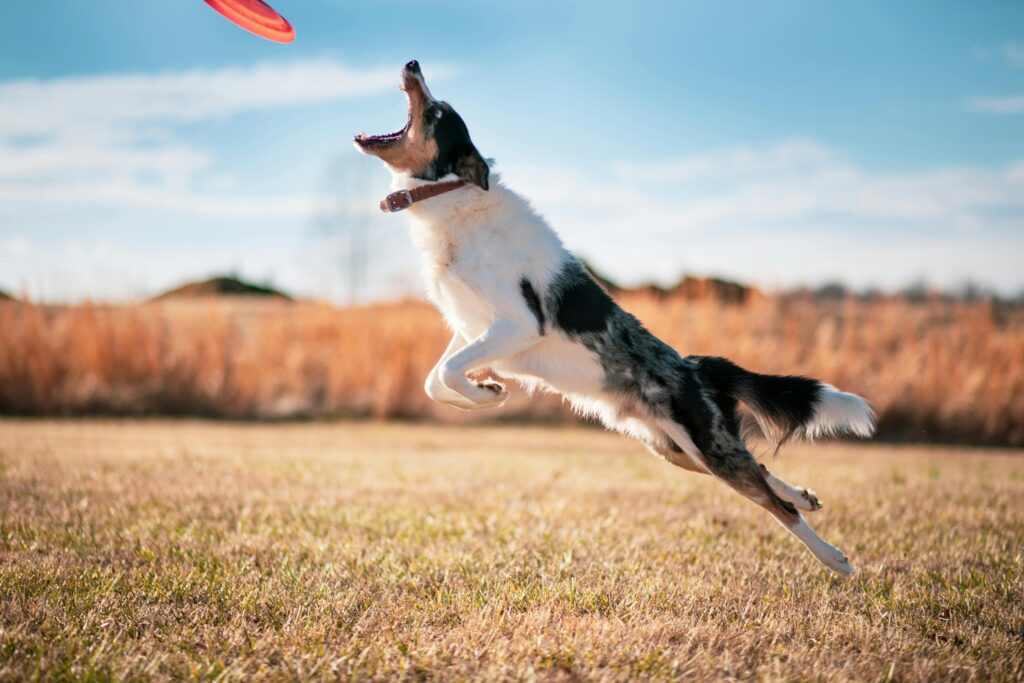
- Age and Life Stage:
- Puppies require nutrient-dense meals with extra calories and protein to support rapid growth.
- Adult dogs need a balanced diet for maintenance and energy.
- Senior dogs may need fewer calories due to reduced activity levels and metabolic changes, though they still require high-quality proteins to maintain muscle mass.
- Breed and Size:
- Small breeds generally require less food overall but may need more frequent meals due to their higher metabolism.
- Medium and large breeds need larger portions, but the specific amount depends on their growth patterns and activity levels.
- Giant breeds may have unique dietary needs to support slower, steadier growth and joint health.
- Activity Level and Lifestyle:
- Active dogs, such as working breeds or those that engage in regular vigorous exercise, will have higher caloric needs.
- Sedentary dogs or those that are mostly indoors may require fewer calories to avoid weight gain.
- Health and Medical Conditions:
- Dogs with specific health issues (e.g., hypothyroidism, diabetes, or digestive disorders) may require adjusted portion sizes or specialized diets.
- Always consult your veterinarian if your dog has health concerns that might affect their dietary requirements.
Calculating Your Dog’s Daily Caloric Needs
A common starting point is to calculate the Resting Energy Requirement (RER), which is often determined using the formula:
RER = 70 × (body weight in kg)^0.75
For example, if your dog weighs 10 kg, the RER would be approximately:
70 × (10)^0.75 ≈ 70 × 5.62 ≈ 393 calories per day.
Next, the Maintenance Energy Requirement (MER) adjusts the RER based on activity level, using a multiplier. For most adult dogs, a multiplier between 1.2 and 1.8 is appropriate. Active or working dogs might require even higher multipliers.

Once you have the estimated daily caloric needs, you can use that information to determine how much food to feed based on the calorie content listed on your dog food’s packaging.
Below is a simplified example table to illustrate daily caloric needs for dogs of various weights (using moderate activity multipliers):
| Dog Weight (kg) | Approximate RER (calories/day) | Estimated MER (calories/day) |
| 5 kg | ~175 calories | ~210–315 calories |
| 10 kg | ~393 calories | ~470–705 calories |
| 20 kg | ~778 calories | ~934–1,402 calories |
| 30 kg | ~1,128 calories | ~1,354–2,031 calories |
| 40 kg | ~1,470 calories | ~1,764–2,646 calories |
Note: These values are general estimates. Always refer to your pet food packaging and consult with your veterinarian for a tailored recommendation.
Understanding Feeding Guidelines on Dog Food Packages
Commercial dog food manufacturers usually provide feeding guidelines on the packaging, which are based on the caloric needs of dogs at various weights. While these guidelines are a helpful starting point, they are not absolute.

For a step-by-step guide on how to wear collar to an Affenpinscher, check out this detailed article to ensure a comfortable and secure fit for your dog.
Factors such as your dog’s age, activity level, and overall health may require adjustments to these recommendations. Here are some tips when using feeding guidelines:
- Start with the recommended amount: Use the manufacturer’s guidelines as a baseline.
- Monitor your dog’s body condition: Assess if your dog is maintaining a healthy weight, or if adjustments are needed.
- Adjust for treats: Treats and snacks should not make up more than 10% of your dog’s daily calorie intake.
- Regularly re-evaluate: As your dog grows or if their activity level changes, you may need to adjust their portion size.
Feeding Frequency: How Often Should You Feed Your Dog?
The number of meals per day can also affect portion sizes. Generally, adult dogs are fed once or twice daily, while puppies often require three to four smaller meals throughout the day due to their high energy needs and smaller stomach capacity. Consistency in feeding times helps maintain stable energy levels and supports proper digestion.
For example:
- Puppies: 3-4 meals per day
- Adult dogs: 1-2 meals per day
- Senior dogs: Often 2 smaller meals per day may be preferable
Special Considerations for Puppies and Senior Dogs
Puppies
Puppies require more frequent meals with a higher calorie density to support rapid growth and development. Feeding guidelines for puppies often differ from those for adult dogs. It is essential to monitor growth curves and ensure that they are not growing too rapidly or too slowly. Overfeeding can lead to excessive weight gain and joint problems, while underfeeding can result in stunted growth.

Senior Dogs
Senior dogs might not be as active as their younger counterparts, which means their caloric needs might be lower. However, older dogs still require high-quality protein to maintain muscle mass and adequate fiber for digestive health.
In some cases, senior diets include added supplements such as omega-3 fatty acids, glucosamine, and antioxidants to support joint health and overall wellbeing. Portion sizes for senior dogs should be adjusted to prevent obesity while still providing the necessary nutrients.
Common Mistakes and How to Avoid Them
Feeding your dog the correct amount isn’t always straightforward. Here are some common mistakes pet owners make and how to avoid them:
- Relying Solely on Package Guidelines:
While package guidelines provide a good starting point, they are not a one-size-fits-all solution. Regularly assess your dog’s body condition and adjust portions as necessary. - Overlooking Treat Calories:
Treats and table scraps can add up quickly. Remember that treats should only account for about 10% of your dog’s daily caloric intake. - Infrequent Weigh-Ins:
Regularly weigh your dog to track their growth or weight loss. Small changes can signal that adjustments in portion size are needed. - Neglecting Activity Level Variations:
Seasonal changes, health conditions, or shifts in activity level (e.g., more exercise during summer months) may require changes in your dog’s diet. - Not Consulting a Professional:
If you’re unsure about your dog’s nutritional needs or if they have health issues, seek guidance from a veterinarian or a pet nutritionist. They can provide tailored advice based on your dog’s specific needs.
Check out the best dog collars for Border Collie to find durable, stylish, and comfortable options for your active dog.
Adjusting Food Amounts Based on Health and Lifestyle
Your dog’s dietary needs can change over time. Regular veterinary check-ups are crucial for assessing whether your dog is at a healthy weight and receiving the right amount of nutrition. If you notice weight gain, increased lethargy, or other health issues, it may be time to re-evaluate their portion sizes or switch to a different type of food. Similarly, if your dog is losing weight or appears undernourished, a caloric increase may be necessary.
A good practice is to use a body condition score (BCS) chart to monitor your dog’s weight. A BCS chart provides a visual and practical guide to determine whether your dog is underweight, ideal, or overweight based on physical appearance and palpation of key areas such as the ribs, waist, and abdominal region.
Sample Feeding Plan and Table
Below is an example of a feeding plan for an adult dog of moderate activity:
| Dog Weight (kg) | Daily Caloric Needs (MER) | Recommended Food Amount (cups/day) |
| 10 kg | ~500-700 calories | 1 to 1.5 cups |
| 20 kg | ~900-1,400 calories | 2 to 3 cups |
| 30 kg | ~1,300-2,000 calories | 3 to 4 cups |
Note: These values are approximate. Actual food amounts depend on the caloric density of the dog food and your dog’s unique needs. Always consult your veterinarian for personalized guidance.
Monitoring Your Dog’s Health and Adjusting Portions
Regularly monitoring your dog’s weight, body condition, and overall behavior is key to ensuring their diet is appropriate.
For guidance on choosing the right collar size for an Airedale puppy, check out this detailed guide.
Here are some steps to help you stay on track:
- Weekly Weigh-Ins: Record your dog’s weight weekly to catch any unexpected changes early.
- Visual Assessment: Check for visible signs of weight gain or loss, such as a tucked abdomen, visible ribs, or a sagging waistline.
- Activity and Energy Levels: Note any changes in your dog’s activity levels. A drop in energy might indicate that they need more calories, while lethargy could suggest overfeeding.
- Consultation: If you’re unsure about your dog’s progress or need help adjusting their food intake, consult your veterinarian.
Conclusion
Deciding how much food to feed your dog is a dynamic process that requires attention to detail and an understanding of your dog’s unique nutritional needs. By considering factors such as age, breed, weight, activity level, and overall health, you can tailor a feeding plan that supports your dog’s long-term wellbeing.
Starting with the general guidelines provided on food packaging, using formulas to estimate caloric needs, and adjusting based on real-time feedback from your dog’s condition will help you find the right balance.
Remember that your dog’s dietary needs may change over time. Regular veterinary visits, periodic weight checks, and adjustments based on activity levels and life stage are essential to ensuring that your dog remains healthy and energetic.
For insights on whether Airedales are good off-leash, explore this comprehensive article. Hope so, now you know the answer to “how much food should i feed my dog?”.
With careful observation, proper portioning, and a commitment to quality nutrition, you can confidently provide your furry companion with the right amount of food to fuel their adventures and maintain a high quality of life.

